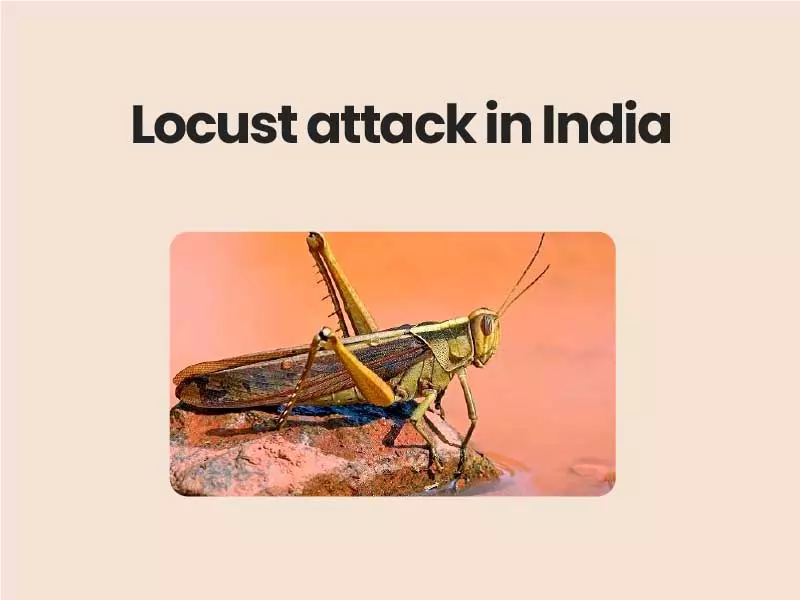Companion@360 → 7 Month programme to sharpen your writing skills → REGISTER NOW

Locust problem
The Desert Locust is a trans-boundary pest which can cause irreparable damages, affecting about 60 countries, mainly India, Pakistan, Afghanistan, Arabia, Persia, Iraq and Africa. It is known to migrate in swarms from one country to another leaving behind famine. Adult locust swarms can fly up to 150 km (93 miles) a day with the wind and adult insects can consume roughly their own weight of fresh food per day. A very small swarm eats about as much food as 35,000 people eat in a day.
- Indian Agriculture is highly prone to Desert Locust. Usually, the locust swarms enter the Scheduled Desert Area of India through Pakistan for summer breeding in the month of June/July with the advent of monsoon. This year, however, the incursions of locust hoppers and pink swarms have been reported much earlier because of the presence of a residual population of Locusts in Pakistan (uncontrolled from last season).
Locust control measures
- Locust Warning Organisation(LWO), set up in the 1900s during British rule and improved upon by successive governments. LWO is responsible for monitoring, survey and control of Desert Locust in Scheduled Desert Areas mainly in the States of Rajasthan and Gujarat.
- Directorate of Plant Protection, Quarantine and Storage, prepares a contingency plan for locust control.
- FAO’s Locust Control Initiative aims to monitor the world-wide locust situation and keep affected countries and donors informed of expected developments. Locust bulletin and risk map are part of the initiative.
- Regular surveys to provide early warning and contingency planning to allow early and effective response before the situation becomes out of control
- Aerial pesticide spraying, now using drones and manual spraying
- Using ducks as biopesticides. A duck on average eats about 200 locusts a day.
All countries affected by desert locust generally adopt a preventive control strategy for the management of desert locust in order to reduce the frequency, duration and intensity of plagues. India has previous experience of successfully managing locust attack.
